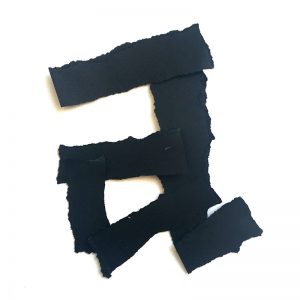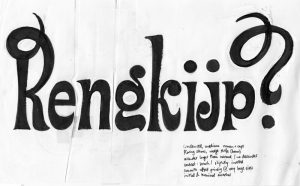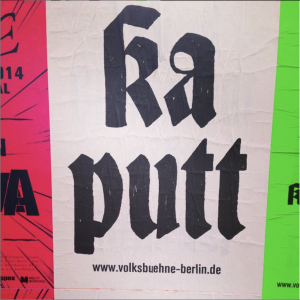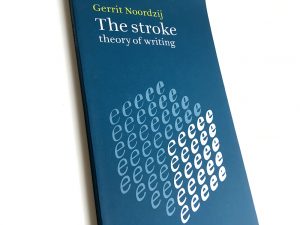
I want it white on black!
White means silence, just like silence in music.
Without silence there is no music.

…seems like a nerdy one. It requires specialized knowledge that only used to be accessible for the happy few. That made it into quite an elitist business, mainly occupied by men. Boy, has that changed.
I was raised at the Royal Academy of Art in The Hague (KABK), at that time (1998) an academy that was known for its high quality of education in typography. That was the reason I choose that academy above all others.
It was such a relief to finally meet like-minded people, after years of feeling awkward because of my fascination for letters. In the first year, I was soon categorized to be one of those nerds, which I found a true compliment.
I remember visiting a congress in Rome about the origin of the serif. Spending 5 days listening to different theories, well, that is not for everyone. But I simply loved it.
As I said, things have changed. When I was a first-year student, I joined a lecture about type. Looking around in the public, I noticed I was the ONLY woman. Now, it is not only a male business anymore.
A few years ago, Alphabettes was founded, a group of female type designers. I complimented the founder to do this, but she told she also got critics. That we —women— had to do that to let our voices be heard.
It is also not an elitist business anymore. The software of producing type is much more accessible and lowkey. The result: more and more typefaces, but less and less quality. An eyesore to the ‘real’ type designers. But what is a ‘real’ type designer?
The process of designing type asks for serious persistence. Starting a typeface is not that hard, but finishing it can take years. I know type designers that spend 25 years on designing a typeface!
What is the most difficult? Well, you can measure every stem, every serif, every curve. But in the end, it is the eye that judges, and that is where the problem starts. There are many optical corrections needed to make letters look balanced. Most people simply don’t have that talent or the patience for it.
After this visual process, there is the technical process of making the typeface complete and work. This is the phase where it’s easy to drop out. I don’t think there is any type designer that doesn’t have an unfinished project laying around.
Starting a typeface with a pencil is one way to do it, but isn’t it a bit old-school? When I was studying at the master Type & Media at the KABK, we HAD to start drawing by hand. This fast sketching process offers you a lot more ideas then starting directly behind the screen.
However, some type designers program every curve by code. This is quite hardcore, and definitely not for everyone.
Being a type designer means being a nerd. Being zoomed in 2000% the whole day on your screen must do something with your mind. But isn’t that the case with any world? This is just a very specific one, one that is not known to ‘ordinary’ people, one that is totally hidden.
Till the moment you understand their passion. Their capacities on a technical and visual level are extraordinary. Something you can only take a deep bow for.
So that is what I do.
Share this post

White means silence, just like silence in music.
Without silence there is no music.

This question is closely related to: ‘How do I choose a typeface?’

The most common answer:
based on conventions and connotations.

A letter is not any different from a stain. It is making a shape and a counter shape.